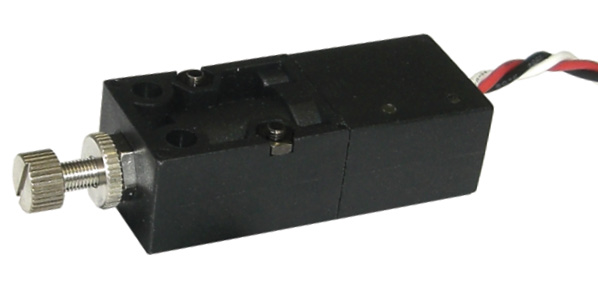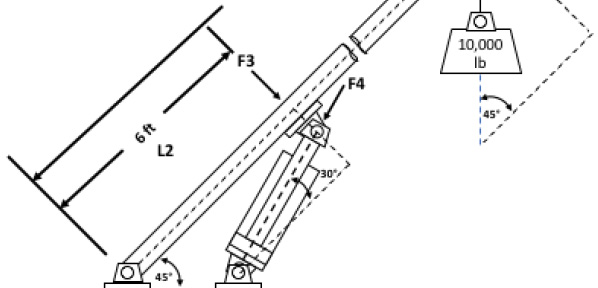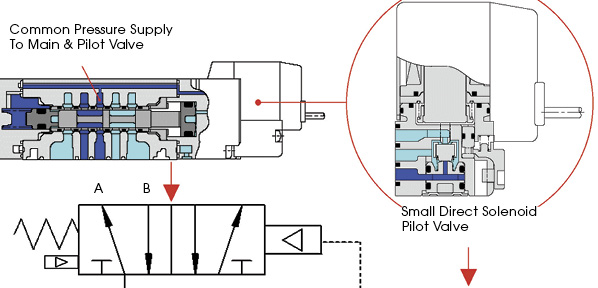Mechatronics and Fluid Power
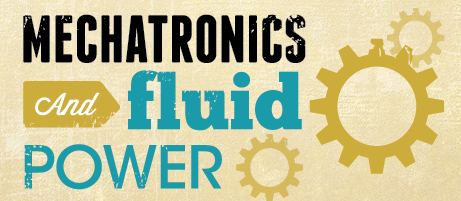
Whenever the term “mechatronics” is discussed among fluid power professionals, it seems that each person has a different opinion as to its meaning. These opinions stem from the varied interests of those who use them, and it makes a single, clear definition difficult to obtain. The intent of this article is to develop a clearer definition of the term and then to see where fluid power training and certification fit in.
The term “mechatronics” originated at the Yasakawa Electric Company in the 1960s. The name comes from combining the terms “mecha” from mechanics and “tronic” from electronics. It was used to describe the necessary integration of electrical control with mechanical systems when accuracy and repeatability were needed. Over time, the term came to include the five most recognized areas of engineering: mechanical, electrical, telecommunication, control, and computer. Mechatronics is still an emerging “concept” of engineering concerned with the design of complex systems for sustainable manufacturing.
We will define a mechatronics system as a multi-disciplinary engineered process for sustainable manufacturing.
You may have noticed that fluid power engineering is not included in the common understanding of mechatronics. This is because, for the most part, fluid power systems are considered part of mechanical engineering and so are relegated to a sub-heading. This is unfortunate. It diminishes the awareness of the need for training in fluid power as part of any career path toward mechatronics. The fact is that, for many sustainable manufacturing processes, fluid power is the best method for energy transfer. A mechatronics engineer without proper fluid power knowledge may not have the necessary tools to design the best system, and the mechatronics technician without fluid power education will be ill equipped to maintain, trouble-shoot, or repair even a well-designed system.
So, 1) what does mechatronics have to do with fluid power, and 2) what does it have to do with fluid power technicians, the people who service these systems?
Before attempting to answer either question, it is necessary to examine what constitutes a mechatronics system. As used here, the term “system” will generally include some kind of mechanical process, sensors for signaling and conditioning operations, adjoining circuitry, a controller, some kind of input from an operator, and all with a view to sustainable manufacturing.
The diagram in Fig. 1 represents a large automated assembly line. The chart is read in a clockwise direction. The process begins at the point of input, which may be some form of human machine interface (HMI). This interface could range from a simple start switch to a touch screen. The input signal is then transmitted to a controller, which could be a personal computer or a programmable logic controller (PLC). There are other types of controllers, such as a proportional-integral-derivative (PID) controller, which could serve as the brain of the system. The controller sends out command signals. If the system has what is referred to as an “open loop,” there will be no feedback of information as to what is actually happening during the manufacturing process. In closed-loop systems, sensors and switches provide feedback information. Feedback is used by the controller to determine the state of the system—whether or not the various functions are operating according to specifications. Feedback can also be used to measure proximity, temperature, and velocity. Feedback can make machinery safer and more efficient because it allows the controller to compare what is actually happening to what is supposed to be happening. Therefore, many, if not most, systems are closed loop.
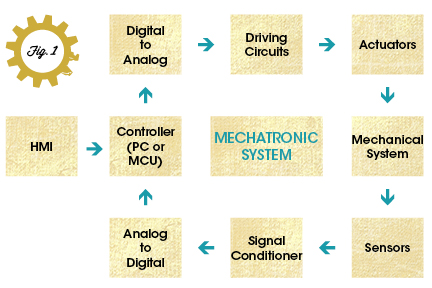
The command and feedback information is generated in two forms: digital and analog. A digital signal is a physical signal that is a representation of a sequence of discrete values. In an analog electrical signal, the voltage, current, or frequency of the signal may be varied to convey the information.
Commands from the controller are usually in digital form and must be converted to analog in order to be understood by the devices they are meant to control. Likewise, the analog information coming back from the sensors will need conditioning before it can be understood by the controller.
The mechanical system includes the mechanism that physically contacts the workload and may include belts, chains, pulleys, etc. The mechanical system pushes and pulls or turns a movable load, and this is where the “actuator” comes into play.
The actuator does the work by pushing, pulling, or turning, and is often a fluid power cylinder, rotary actuator, or motor. These are not the only kinds of actuators used. Some designers are specifying electric devices, such as electric cylinders, to do the job. These electric actuators (sometimes the combination of a ball-screw driving mechanism and servomotor) are capable of generating large amounts of thrusting force with precise control of speed and movement. Electric actuators may have advantages over fluid power actuators in certain circumstances, but fluid power actuators, with greater power density, speed, and flexibility, are still widely preferred.
1. What does mechatronics have to do with fluid power?
Obviously those servicing these systems must have broad knowledge, covering multiple disciplines, including fluid power.
2. What does mechatronics have to do with the fluid power technicians?
Fluid power technicians need to include mechatronics in their training if they are to service machinery whose maintenance and upkeep are determined by uptime. By referring back to the chart in Fig. 1, it is easy to see that a technician needs basic electrical skills, knowledge of electronics, programming, as well as other skills taught for machine maintenance. These are the minimum skill sets needed to service this equipment efficiently. Since engineering and modern machine maintenance are both involved, two approaches to education and accreditation are needed. One should be based on a specialized mechatronics curriculum for fluid power engineers and another for fluid power technicians. There is a great degree of crossover between the two disciplines, but the technician does not need all the knowledge of an engineer to be successful working on such systems. Likewise, an engineer does not necessarily need to know a great deal about the performance of machine maintenance. Engineers and technicians both need special skill sets that match education to job requirements. Therefore, two distinct career paths should be recognized by two-year and four-year institutions.
Since mechatronics is still developing, there will continue to be attempts to define and apply it across multiple disciplines. It is necessary that the fluid power industry continues to grow with this emerging technology.

